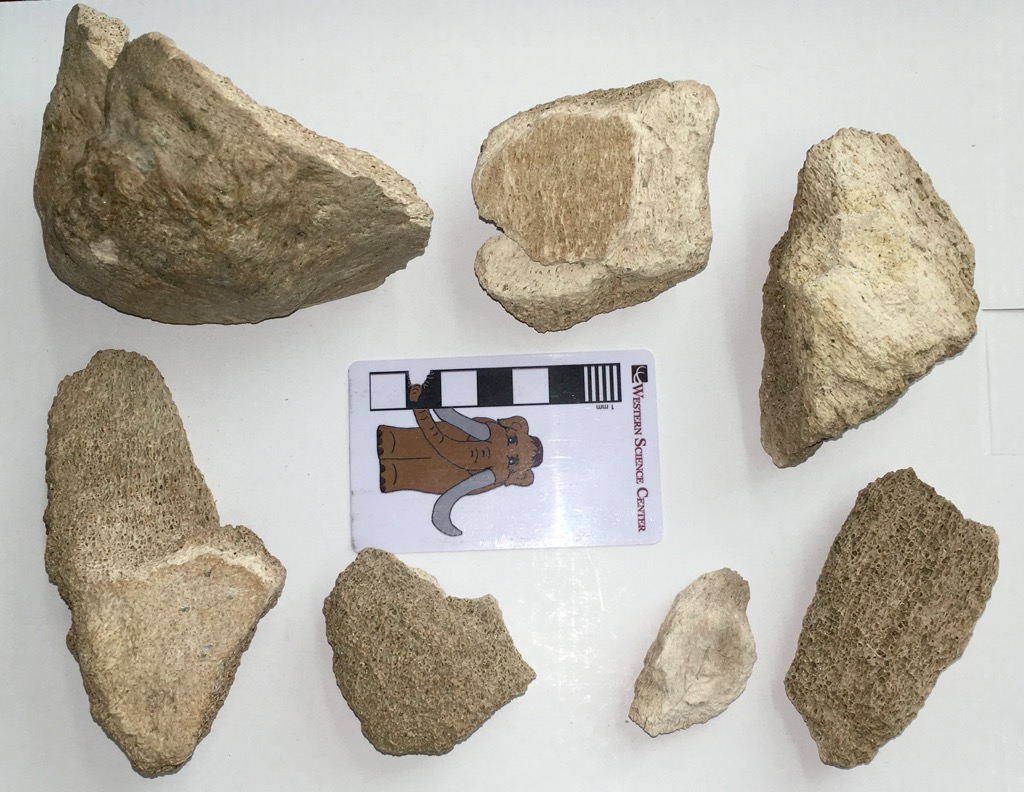 Tomorrow night the Western Science Center is holding the annual Science Under the Stars fundraiser. This year is a particularly special event, because the museum is celebrating its 10th anniversary; we opened to the public for the first time on October 15, 2006.WSC has grown over the last decade into a major regional museum and has brought in collections from a variety of locations, but the original reason we were founded was to house the collections recovered during the construction of Diamond Valley Lake and its related projects, such as the San Diego Canal and Domenigoni Parkway. These specimens still make up the majority of our collections.The seven bone fragments shown above we discovered by archaeologist Melinda Horne on 7 June 1993 along the path of the San Diego Canal. They don't look like much, but one thing is immediately obvious; they're pretty big fragments. The only animals found in California today (outside of zoos) that are even remotely close to being large enough to produce bones like these are horses and cows , and these fragments seem too large even for those. The largest fragment is a bit better preserved than the others; here's a different view:
Tomorrow night the Western Science Center is holding the annual Science Under the Stars fundraiser. This year is a particularly special event, because the museum is celebrating its 10th anniversary; we opened to the public for the first time on October 15, 2006.WSC has grown over the last decade into a major regional museum and has brought in collections from a variety of locations, but the original reason we were founded was to house the collections recovered during the construction of Diamond Valley Lake and its related projects, such as the San Diego Canal and Domenigoni Parkway. These specimens still make up the majority of our collections.The seven bone fragments shown above we discovered by archaeologist Melinda Horne on 7 June 1993 along the path of the San Diego Canal. They don't look like much, but one thing is immediately obvious; they're pretty big fragments. The only animals found in California today (outside of zoos) that are even remotely close to being large enough to produce bones like these are horses and cows , and these fragments seem too large even for those. The largest fragment is a bit better preserved than the others; here's a different view: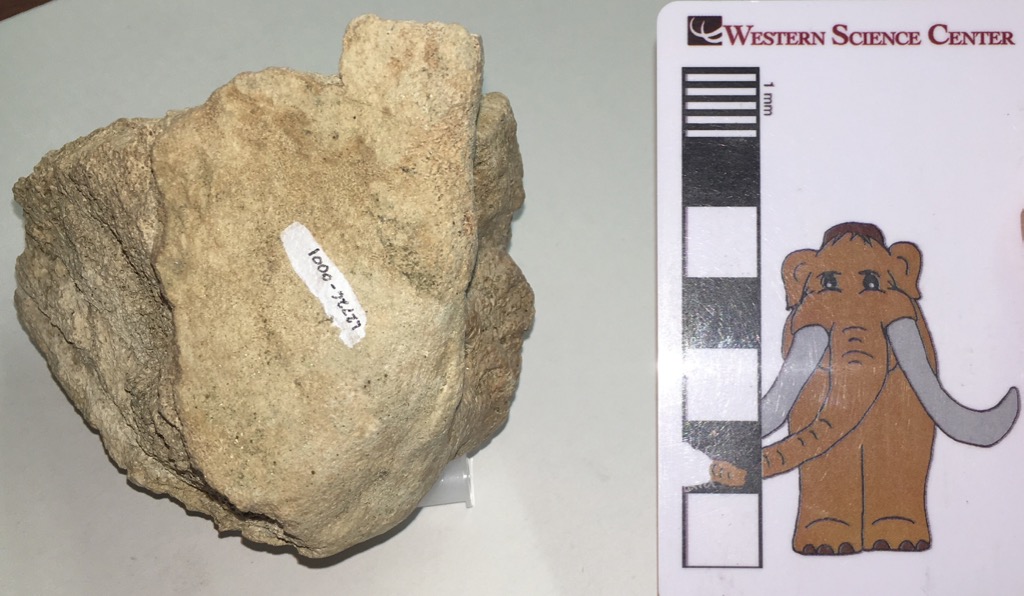 The large, flat surface (where the number is painted) is an articular surface, where this bone articulated with another bone. Even though it's incomplete, there's enough preserved to identify this as the joint surface on the shoulder blade (technically, the glenoid fossa of the scapula). And that gives us another clue; this bone is far too large to be the glenoid fossa from a horse or a cow. The only common things in California this big are extinct Pleistocene elephants. This bone established the presence of Ice Age deposits in the area.This was noted by R. L. Reynolds from the George C. Page Museum, who tentatively identified the specimen as a mammoth, as written on an index card stored with the specimen:
The large, flat surface (where the number is painted) is an articular surface, where this bone articulated with another bone. Even though it's incomplete, there's enough preserved to identify this as the joint surface on the shoulder blade (technically, the glenoid fossa of the scapula). And that gives us another clue; this bone is far too large to be the glenoid fossa from a horse or a cow. The only common things in California this big are extinct Pleistocene elephants. This bone established the presence of Ice Age deposits in the area.This was noted by R. L. Reynolds from the George C. Page Museum, who tentatively identified the specimen as a mammoth, as written on an index card stored with the specimen: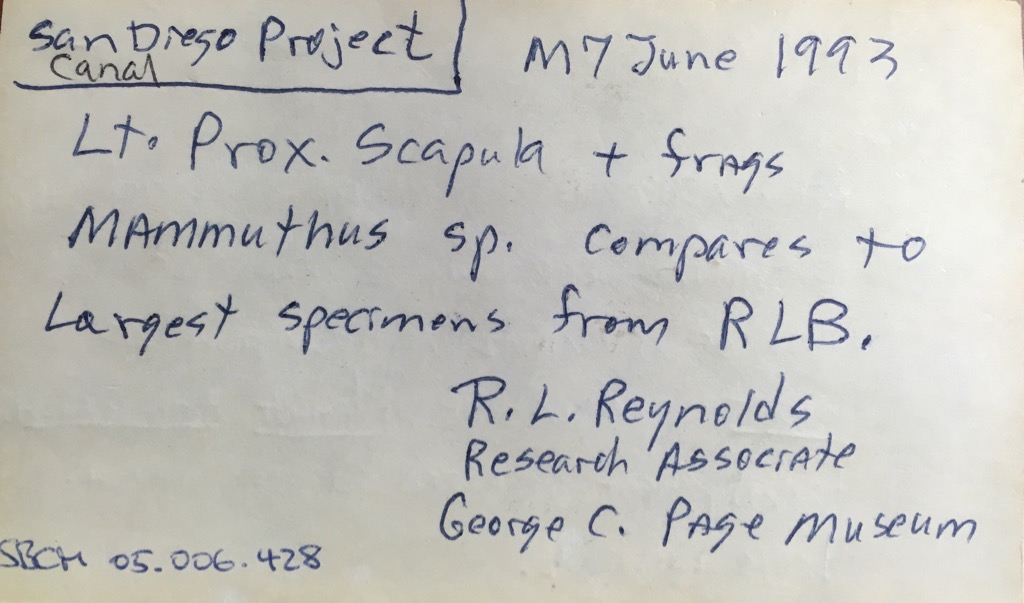 Several years later, Eric Scott (who is now at the Cooper Center, and is one of my collaborators on the Mastodons of Unusual Size project), examined the specimen and considered it more likely to be from a mastodon than a mammoth (his notes were written on the back of the same index card):
Several years later, Eric Scott (who is now at the Cooper Center, and is one of my collaborators on the Mastodons of Unusual Size project), examined the specimen and considered it more likely to be from a mastodon than a mammoth (his notes were written on the back of the same index card):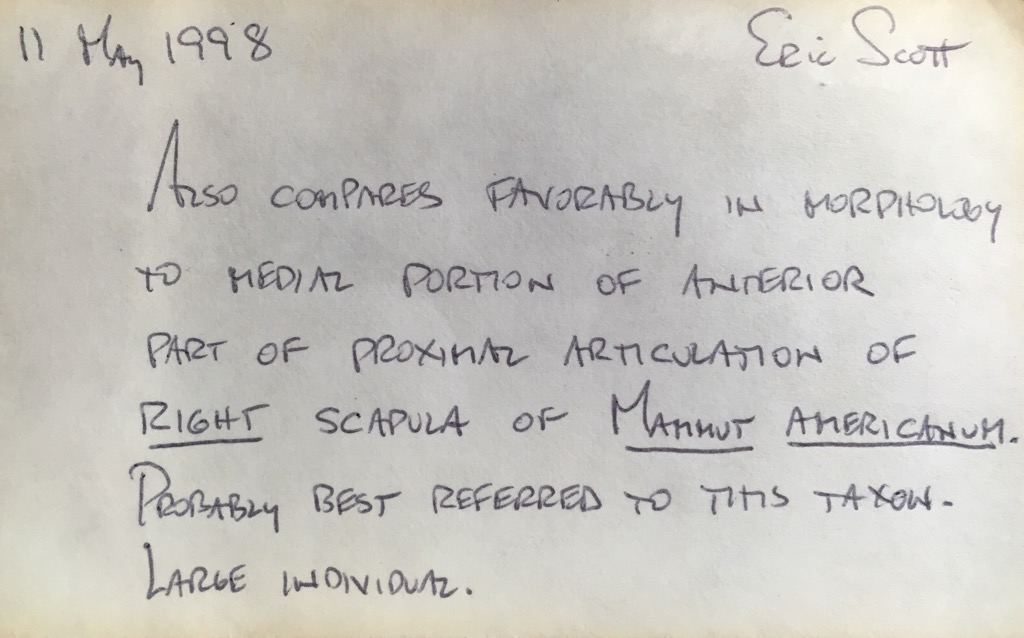 To give an idea of what Eric was seeing, here's a glenoid fossa view of the Watkins Glen mastodon from New York (this image is modified from Hodgson et al., 2008)...
To give an idea of what Eric was seeing, here's a glenoid fossa view of the Watkins Glen mastodon from New York (this image is modified from Hodgson et al., 2008)...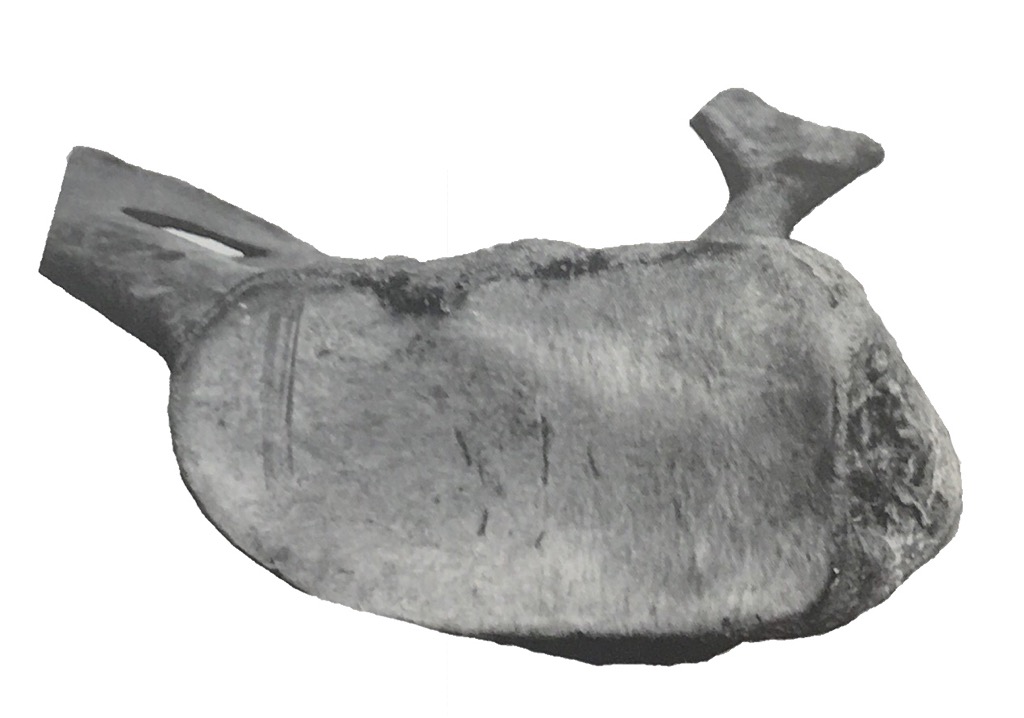 ...and here's the same image with the California fragment scaled to the same size and superimposed:
...and here's the same image with the California fragment scaled to the same size and superimposed: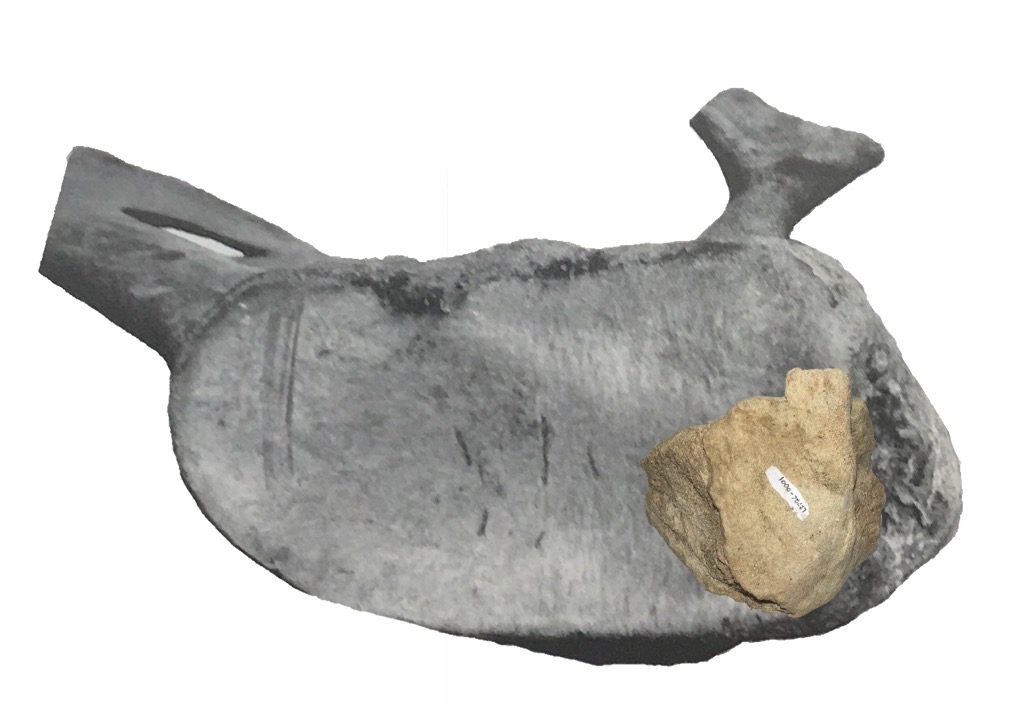 That's a pretty good match, and I agree with Eric that this is probably from a mastodon, the first from the project.These seven fragments put paleontologists and engineers on alert that there could be additional Pleistocene fossils uncovered during the construction of the reservoir. As the project progressed, more specimens were uncovered, and 2 years after the initial find Max was discovered. Over the next decade more than 100,000 fossils were recovered in the area, a collection so large that a new museum was built to house it, and tomorrow night we'll celebrate that museum's tenth anniversary.A fossil doesn't have to look impressive to be important. Reference:Hodgson, J. A., W. D. Allmon, P. L. Nester, J. M. Sherpa, and J. J. Chimney, 2008. Comparative osteology of Late Pleistocene mammoth and mastodon remains from the Watkins Glen Site, Chemung County, New York. In Allmon, W. D. and P. L. Nester (eds.), 2008. Mastodon Paleobiology, Taphonomy, and Paleoenvironment in the Late Pleistocene of New York State: Studies on the Hyde Park, Chemung, and North Java Sites. Palaeontographica Americana 61:301-367. Available for purchase.
That's a pretty good match, and I agree with Eric that this is probably from a mastodon, the first from the project.These seven fragments put paleontologists and engineers on alert that there could be additional Pleistocene fossils uncovered during the construction of the reservoir. As the project progressed, more specimens were uncovered, and 2 years after the initial find Max was discovered. Over the next decade more than 100,000 fossils were recovered in the area, a collection so large that a new museum was built to house it, and tomorrow night we'll celebrate that museum's tenth anniversary.A fossil doesn't have to look impressive to be important. Reference:Hodgson, J. A., W. D. Allmon, P. L. Nester, J. M. Sherpa, and J. J. Chimney, 2008. Comparative osteology of Late Pleistocene mammoth and mastodon remains from the Watkins Glen Site, Chemung County, New York. In Allmon, W. D. and P. L. Nester (eds.), 2008. Mastodon Paleobiology, Taphonomy, and Paleoenvironment in the Late Pleistocene of New York State: Studies on the Hyde Park, Chemung, and North Java Sites. Palaeontographica Americana 61:301-367. Available for purchase.

